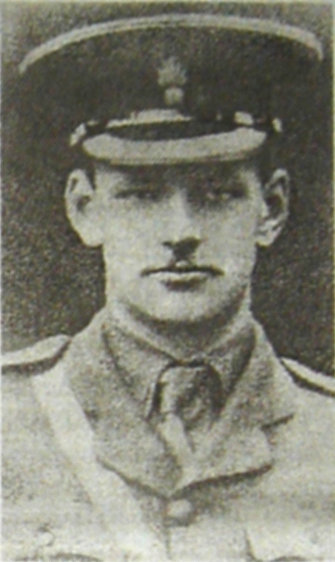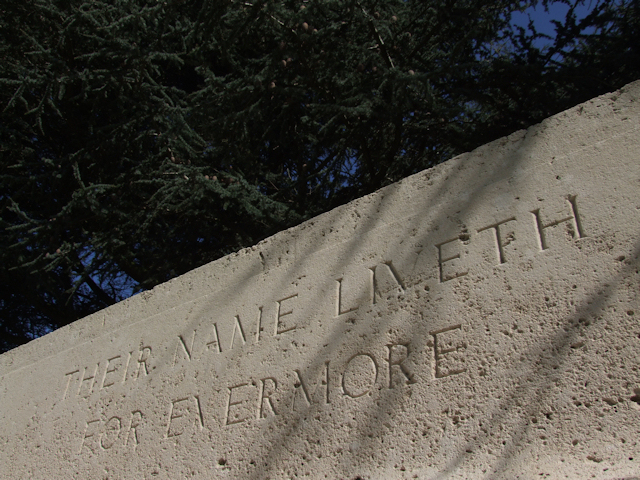Name
George Edward Cecil
9 September 1895
Conflict
First World War
Date of Death / Age
01/09/1914
18
Rank, Service Number & Service Details
Second Lieutenant
Grenadier Guards
2nd Bn.
No. 4 Coy.
Awards: Service Medals/Honour Awards
Not Yet Researched
Cemetery/Memorial: Name/Reference/Country
GUARDS GRAVE, VILLERS COTTERETS FOREST
II. 4.
France
Headstone Inscription
Not Researched
UK & Other Memorials
Hatfield Town Memorial,
Hatfield In Memoriam Book
Pre War
George Edward Cecil, born on 9 September 1895, only son of Lord Edward Cecil, K.C.M.G., D.S.O. Brevet Col., Coldstream Guard, and Violet Georgina, 2nd daughter of Admiral Frederick Augustus Maxse of Dunley Hill Surrey, and Godson of Robert Arthur Talbot, 3rd Marquess of Salisbury, K.G.,P.C.
Lord Cecil was the financial advisor to the Egyptian Government from 1912.
The 1911 Census recorded George Edward Cecil, age 15, as a student at Winchester College.
George had a life-long ambition to soldier. After Winchester College (1909-12) he passed into Sandhurst as a King's Cadet aged 17 and was gazetted Ensign in his father's old regiment in February 1914.
Wartime Service
George, still only 18, he went to France with his Battalion on 13 August 1914. It was among the first to arrive.
At first, Cecil acted as Orderly Officer to General Scott Kerr but had command of a platoon by the time the Guards crossed the Aisne at Pommiers during the Retreat. Exhausted by days of marching, 2 Bn. Grenadiers were at rest when orders came in soon after midnight on 1 September to take up a rear-guard position just north of Vivieres. No casualties resulted from the first encounter with enemy patrols at first light and the Battalion retired in good order into the forest of Villers-Cotterets. There was an outburst of firing at about 11am which soon became chaotic forest fighting at point blank range. Part of No 4 Company made a counter attack, suffering badly in the melee and most of its officers and men were either killed, wounded or missing, among them George Cecil. He was killed leading a bayonet charge, sword in hand.
The story of this engagement and its casualties appears in "Fifteen Rounds a Minute", the diaries of Major 'Ma' Jeffreys (J M Craster, McMillan 1976). This also gives a fascinating account of the visit to the battlefield later that same month by Cecil's mother, and the subsequent visit by Lord Killanin in November 1914 to locate and exhume all those buried in a pit after the action of 1 September. The CWGC burial report confirms the facts. Killanin's party found 94 men, recorded their details where possible and re-buried them under a cross, on the spot. This later became the Guards Cemetery. They found the four officers who had been killed and were able to identify them by clothing and personal effects; 2/Lt Cecil being identified by the initials on his vest. The officers were originally buried in a hastily purchased plot in the cemetery at Villers-Cotterets but after the War their remains were brought back to join their men.
In 1916 Lady Edward Cecil gave the Cecil Range to Winchester in memory of her son and this is still in use. Later she erected a stone memorial by the roadside to commemorate the action of 1 September. On the front is inscribed 'PASSANT ARRETE-TOI' below a carving in relief of a weeping women standing by a soldier's grave. On the back, the inscription reads:
'IN HONOUR OF THE OFFICERS AND / MEN OF THE GRENADIER COLDSTREAM / AND IRISH GUARDS WHO FELL NEAR / THIS SPOT ON 1st SEPTEMBER 1914. / THIS MEMORIAL WAS PLACED HERE BY / THE MOTHER OF ONE OF THEM AND / IS ESPECIALLY DEDICATED TO SECOND / LIEUTENANT GEORGE EDWARD CECIL'
Although much in the style of CWGC architecture the memorial was privately built and cared for until 1978 when the Grenadiers paid for the removal of a yew hedge and a reduction in the area to be maintained. They then provided capital to provide income for future maintenance and the memorial has remained in the care of CWGC ever since.
George is buried at the Guard's Grave. Villers-Cotterets Forest, Row 11 Grave 4.
The Bishop’s Hatfield Parish Magazine of October 1914, recorded: “....Great anxiety is felt about Mr. George Cecil, who is reported “missing” and of whom no certain knowledge has yet been obtained. He is probably wounded and a prisoner; indeed that is the best hope.....” Then in December 1914: "War and the Herts. Territorials - ......Mr George Cecil fell gallantly fighting in a wood near Villiers Cotterets, his company was surrounded by Germans on three sides and he was shot through the head and chest: for a long time the story of his death was not known because what remained of the Company was captured by the Germans; but luckily in their retreat they left behind some of the wounded in the company who brought the story of how gallantly they fought and told how they buried George Cecil. This story has been lately confirmed by the exhumation of the body which has been laid to rest near an old French church with his brother officers who fell with him. His death not only brings sorrow to his mother for he was her only and much beloved son, but it robs England of one of the men who might have been of the very greatest service to Her, for he was only 19 and gave promise of being a man who would make his mark on the world........Hatfield Roll Honour.....Mr George Cecil’s death is now quite certain we must all feel deep sympathy with Lord and Lady Edward Cecil on the loss of their only son, so promising and brilliant."
Awarded Victory Medal, British War Medal & 1914/15 star
Additional Information
Hatfield Parish Council Souvenir Committee Ledger: Lady Edward Cecil (Mother) Hatfield House received an “In Memoriam and Roll of Honour Album”.
Acknowledgments
Jonty Wild, Christine & Derek Martindale, Hatfield Local History Society (www.hatfieldhistory.uk)



